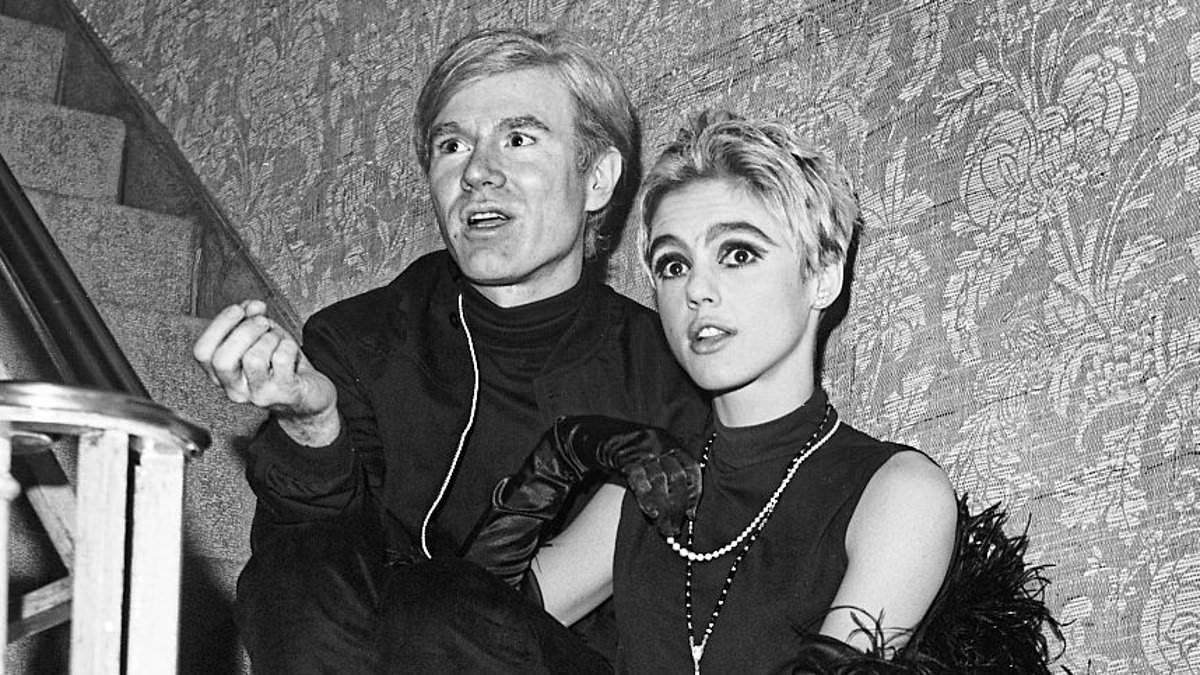
Andy Warhol, an iconic figure in the world of pop art, transformed everyday items—Campbell’s soup cans, Coke bottles, and Brillo pads—into cultural icons. Yet, behind his colorful canvases and artistic genius lies a troubling narrative of exploitation and power dynamics that left his muses emotionally scarred and forgotten. Among these muses was the tragically enigmatic Edie Sedgwick, a socialite, model, and aspiring actress whose life and death symbolized the darker side of Warhol’s world.
Edie Sedgwick: The Glamorous Yet Tragic Muse
Edie Sedgwick’s journey into Warhol’s orbit appeared glamorous to outsiders. She was young, stylish, and brimming with potential when the two met 60 years ago at a party hosted for writer Tennessee Williams’ birthday. Sedgwick’s sultry kohl-rimmed eyes, pixie-like charm, and societal connections seemed to embody the perfect muse Warhol was searching for. However, beneath her captivating exterior lay years of trauma and personal struggle.
Battling an eating disorder and the aftermath of a deeply troubled childhood—including allegations of abuse at the hands of her father—Sedgwick’s life was riddled with emotional turmoil. Yet, Warhol, who thrived on capturing raw vulnerability, seemed more interested in exploiting these weaknesses than offering support. Her performances in avant-garde films like Beauty No. 2, where she played an intoxicated version of herself under humiliating taunts and jests from off-camera voices, showcased this commodification of her pain.
The Factory: A Stage for Art or Exploitation?
Warhol’s famed Manhattan studio, known as The Factory, was a hub of creativity, decadence, and controversy during the mid-to-late 1960s. It drew young artists, actors, and society’s elite who were eager to bask in Warhol’s eccentric light. For Sedgwick and others, though, it proved to be a space where boundaries blurred between inspiration and exploitation.
Richard Polsky, a renowned art dealer and Warhol expert, describes the pop art icon as a voyeur who surrounded himself with attractive individuals to elevate his own self-esteem. Warhol’s films, including Vinyl and Poor Little Rich Girl, often reduced Sedgwick to a caricature of herself—mocking her vulnerabilities and struggles under the guise of artistic expression.
In Beauty No. 2, Sedgwick’s off-camera bully collaborator, Chuck Wein, ruthlessly poked at her fragile psyche, taunting her about her fears, past traumas, and more. What should have been a creative expression turned into a harsh and unforgiving spotlight, forcing Sedgwick to endure emotional manipulation for the sake of entertainment.
The Consequences of Warhol’s Indifference
Despite her unwavering loyalty to Warhol, Sedgwick’s contributions went largely unrecognized. In return for her dedication, she received no financial compensation, merely the fleeting fame of being tied to Warhol’s name. As time passed, Warhol replaced her with new muses like Susan Hoffman (renamed Viva), continuing the cycle of exploitation.
By 1966, Sedgwick distanced herself from The Factory, but her life spiraled into self-destruction. A rumored affair with Bob Dylan, alongside heightened drug use, led to her untimely death at 28. Although her struggles were partly attributed to the toxic environment at The Factory, Warhol remained dismissive, describing her in his book as simply “a wonderful, beautiful blank.”
Warhol’s Legacy: Art and Controversy
Andy Warhol’s impact on art and culture is undeniable. In 2022, his painting Shot Sage Blue Marilyn sold for a record-breaking $195 million, reaffirming his enduring appeal. However, while his artistry continues to inspire millions, the stories of those like Sedgwick—used and discarded—cast a shadow over his legacy.
For a man celebrated as a revolutionary, his regressive treatment of women and exploitation of vulnerable individuals raises important questions about the ethics of artistry. How long should we separate the art from the artist?
Still Captivated by Edie’s Style?
If you’re inspired by Edie Sedgwick’s timeless style, her signature gamine look and smoky eyeshadow continue to influence modern fashion today. Want to capture her iconic glow? Try the Charlotte Tilbury Eyes to Mesmerise Cream Eyeshadow in “Star Gold.” Pair it with a bold, mod eyeliner to channel her effortlessly chic vibe.






